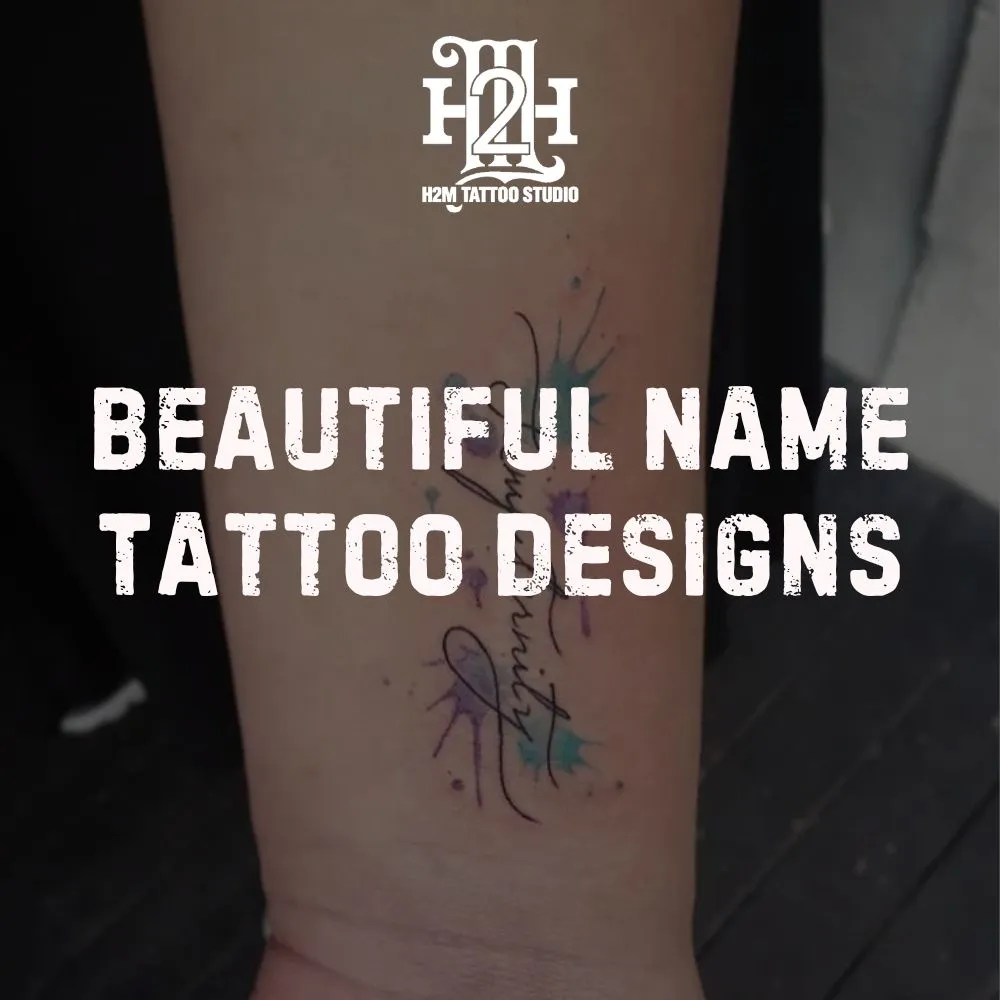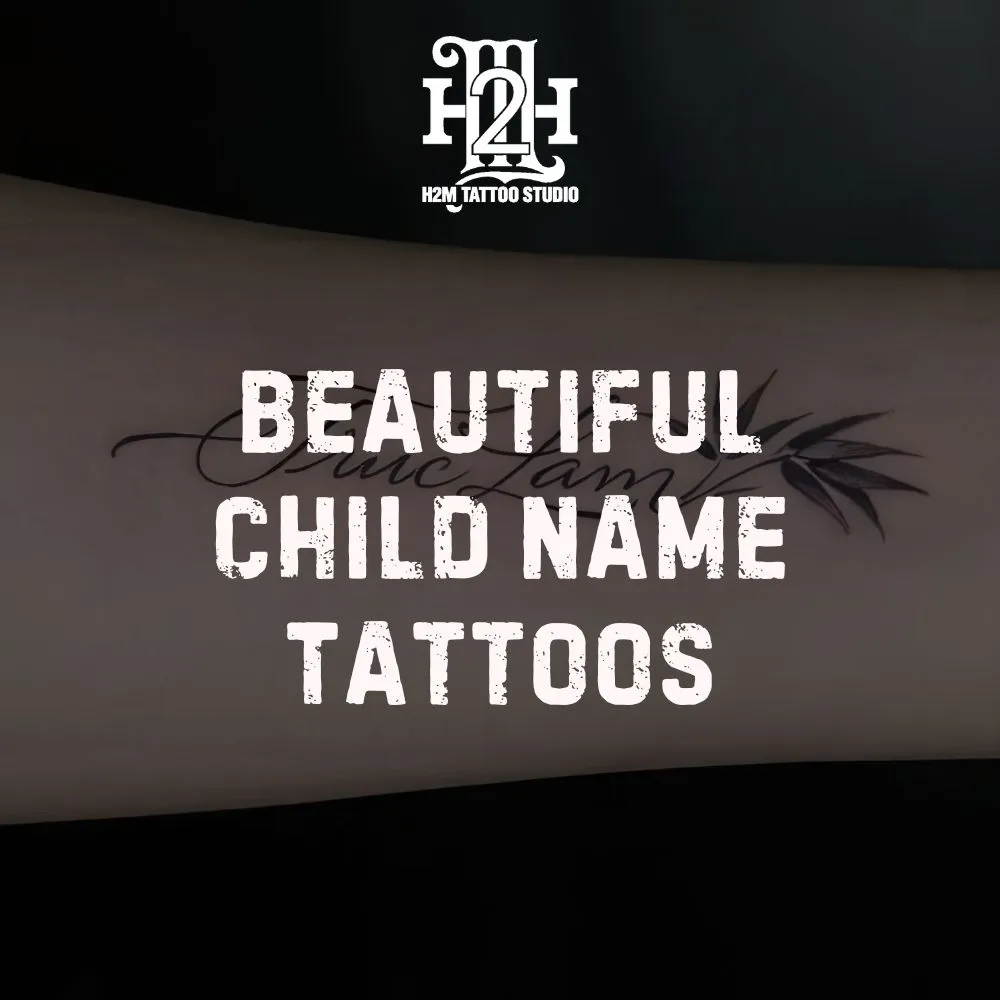Wrist tattoos are a popular and stylish choice, offering a visible yet subtle canvas for meaningful art. However, before booking your session, a burning question is almost always on everyone’s mind: "Does a wrist tattoo hurt?"
At H2M Tattoo Studio, we believe in empowering our clients with honest, detailed information. The short answer is yes, getting a tattoo on your wrist will involve some level of pain, but the full story is much more nuanced. This comprehensive guide will break down the anatomy of the wrist, explain typical pain levels, and provide expert tips to help you manage and minimize discomfort for a smoother tattooing experience.
Understanding Wrist Tattoo Pain
The wrist is one of the most visible and versatile locations for a tattoo. From delicate script to detailed symbols, it's a prime spot for personal expression. However, it's also an area known for being a bit sensitive. The common concern about pain is completely valid, as the level of discomfort can significantly vary based on the exact spot, the design complexity, and your personal pain tolerance.
Understanding why the wrist is sensitive is the first step toward managing your expectations and preparing for your session.
- What this guide covers: We'll dive into the specific anatomy that makes the wrist tender, detail expected pain levels, and share professional tips for pain minimization and optimal healing.
- Why preparation matters: Knowing what to expect transforms a fear of the unknown into a manageable process, ensuring your focus remains on the beautiful art you're about to receive.
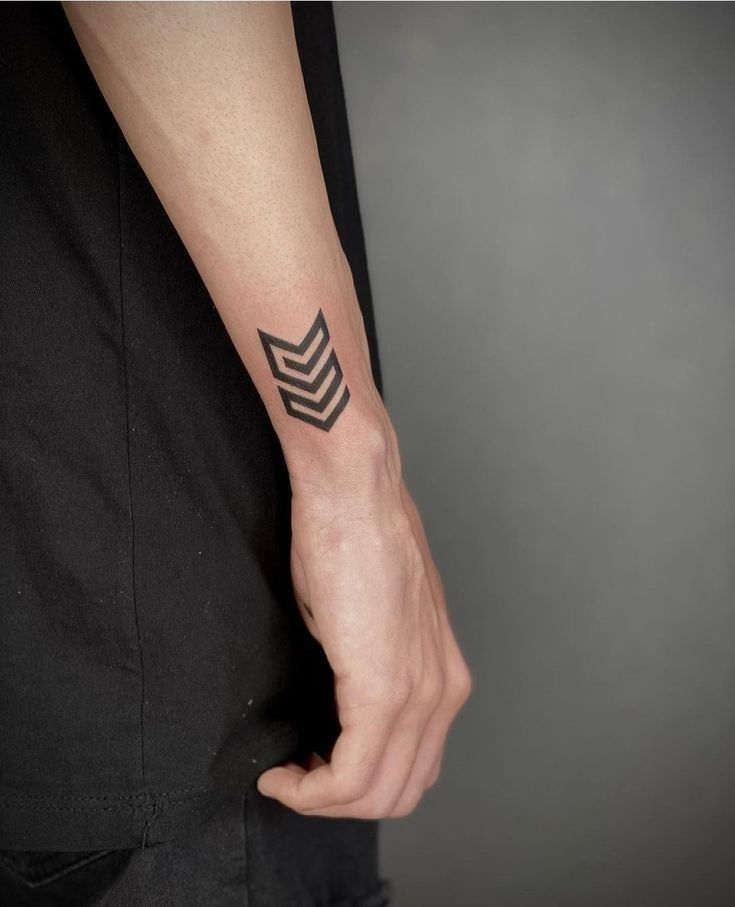
>>>> READ MORE: Does tattoo retouching hurt ? A Complete Expert Guide
Anatomy of the Wrist: Why It Hurts
To understand the pain, we must look beneath the skin. The reason a wrist tattoo hurts more than, say, a bicep tattoo, is purely anatomical. The wrist is a complex joint where many vital structures are located very close to the surface.
The skin on your wrist—especially the inner wrist—is significantly thinner than in other parts of your body, offering less natural padding. A tattoo needle penetrates the epidermis and dermis layers of the skin, and when the skin is thin, the sensation is more direct and intense.
The key anatomical factors contributing to pain are:
- Proximity to Bone: The ulna and radius bones are just beneath the skin. Tattooing directly over bone causes a vibrating, intense sensation that many people find particularly jarring.
- High Concentration of Nerves: The wrist is a major thoroughfare for nerves traveling to the hand and fingers. The median and ulnar nerves are very close to the surface on the inner side, leading to a higher concentration of nerve endings that register and transmit pain signals quickly.
- Tendon and Ligament Action: The numerous tendons that control the movement of your fingers and hand run right under the skin. While the artist avoids tattooing directly into these, the vibration and pressure of the needle are easily transferred to these sensitive structures.
- Thin Subcutaneous Fat: Unlike the arms or legs, the wrist has very little layer of fat to cushion the nerves and bone, allowing the needle sensation to be felt more intensely.
>>>> READ MORE: Does finger tattoo hurt ? Understanding Pain, Experience & Care
Typical Pain Levels and What to Expect
When asking "does a wrist tattoo hurt," the best way to answer is by placing it on a generalized pain scale. Keep in mind that pain is subjective, but based on collective client experience at H2M Tattoo Studio, wrist tattoos typically fall into the moderate to high range.
You can expect the pain to feel less like a sharp sting and more like a constant, vibrating scratch or an intense, hot burning sensation.
Wrist Tattoo Pain Scale (Out of 10):
- Lower Outer Wrist (Over thicker skin/muscle): 3/10 – 4/10. Generally the least painful area on the wrist.
- Upper Wrist/Forearm Transition: 4/10 – 5/10. More muscle padding here means less bone sensation.
- Inner Wrist (Closer to the crease/artery): 6/10 – 7/10. A significantly more intense, sharp pain due to nerve and tendon proximity.
- Directly Over Knobby Bone (Styloid Process): 7/10 – 8/10. The vibration and lack of padding make this a brief, but highly intense, moment.
The size and complexity of your tattoo also play a role. Outlining (the initial line work) is often described as the most painful part, while shading and color filling can feel more like a dull, sustained irritation.
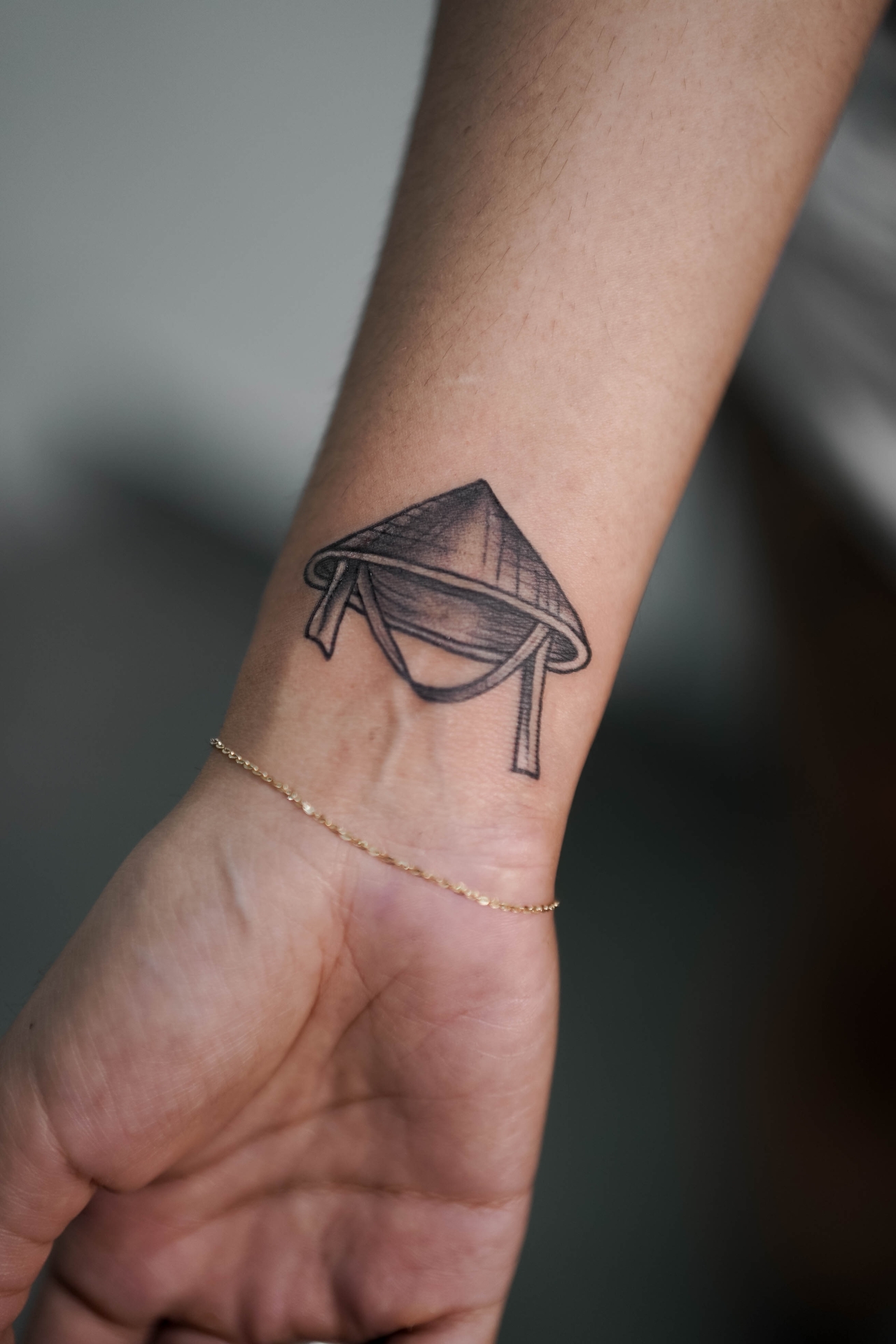
>>>> READ MORE: Does back tattoo hurt ? Pain Guide & Tips from H2M Tattoo Studio
Why Inner Wrist Tattoos Hurt More Than Outer Wrist
When designing a wrist tattoo, the specific location you choose will have a major impact on your pain experience. The inner wrist is overwhelmingly considered more painful than the outer wrist.
The primary reason for this is nerve density and skin sensitivity.
- Inner Wrist: This area is delicate. It's where you can easily feel your pulse (the radial artery), which indicates a higher concentration of crucial nerves and blood vessels close to the surface. The skin here is paper-thin and very tender, making it less resilient to the repeated needle penetration.
- Outer Wrist: This side typically has thicker skin, more underlying tendon structure, and, crucially, less direct nerve traffic. The sensation here is often described as more tolerable, duller, and more akin to a strong scratch.
Client Experience Contrast:
- Outer Wrist: "It felt like an annoying cat scratch, uncomfortable but fine."
- Inner Wrist: "The line work on my inner wrist was sharp and burning, but thankfully it was quick."
If you have a lower pain threshold, discussing an outer wrist placement with your artist at H2M Tattoo Studio might be the best option for your first tattoo.
>>>> READ MORE: What are the least painful places to get a tattoo? Your Complete Pain-Free Guide
Duration and Intensity of Pain
The pain from a wrist tattoo is not a constant experience; it comes in phases.
During the Tattooing Session
The pain is most acute while the needle is on your skin. You'll likely experience an initial intense burst, which your brain often adjusts to after about 15–20 minutes. Artists know this and take short breaks. The intensity will spike during bone work or deep shading, but the duration of this high-level pain corresponds directly to the size of the piece. A small, simple design might only involve 30-60 minutes of needle time, making the pain very manageable.
After the Tattoo is Complete
Once the session is over, the sharp, immediate pain stops. It is replaced by a dull, throbbing sensation—similar to a bad sunburn.
Post-Tattoo Discomfort Timeline:
- Hours 0–24: The peak of the "sunburn" feeling. Swelling and redness are normal.
- Day 2–3: The throbbing subsides, replaced by a tight, itchy, and irritated feeling.
- Day 4–7: Itching is the main complaint as the top layer of skin begins to peel and flake.
Important Warning Signs:
If the pain is escalating (getting worse instead of better) after 48 hours, or is accompanied by green/yellow discharge, excessive heat, or red streaking, this could indicate an infection. Contact your tattoo artist and a medical professional immediately.
Managing and Minimizing Wrist Tattoo Pain
While you can't eliminate the pain, you can certainly manage it. Preparation is the key to minimizing discomfort.
Preparation: Before Your Session
- Be Well-Rested: Fatigue significantly lowers your pain tolerance. Get a solid 7-9 hours of sleep the night before your appointment.
- Stay Hydrated and Eat: A well-nourished body handles stress better. Eat a substantial meal rich in protein and complex carbs about 1-2 hours before your session. Bring water and a sugary snack (like a candy bar) to keep your blood sugar stable.
- Avoid Alcohol and Caffeine: Both can thin your blood, leading to excessive bleeding (which impacts the tattoo process) and increased sensitivity. Skip them at least 24 hours prior.
- Communicate Your Concerns: Let your H2M Tattoo Studio artist know that you are nervous about the pain. They are experts at coaching you through the process, taking breaks, and applying a lighter touch where needed.
During the Session
- Master Your Breathing: Focus on slow, deep, rhythmic breathing. Deep exhalation can help you ride out intense moments. Do not hold your breath.
- Distraction is Your Friend: Bring headphones and listen to a podcast, music, or a movie. Focusing on something else is incredibly effective.
- Use Positive Self-Talk: Remind yourself that the pain is temporary and that the end result is permanent art you will love.
Post-Tattoo Care
- Apply a Cold Compress: Gently applying an ice pack (wrapped in a clean cloth) for 10-15 minutes can help reduce initial swelling and throbbing pain.
- Over-the-Counter Pain Relievers: Acetaminophen (Tylenol) is generally preferred over Ibuprofen (Advil/Motrin) as it doesn't thin the blood as much, though always consult a medical professional if you have concerns.
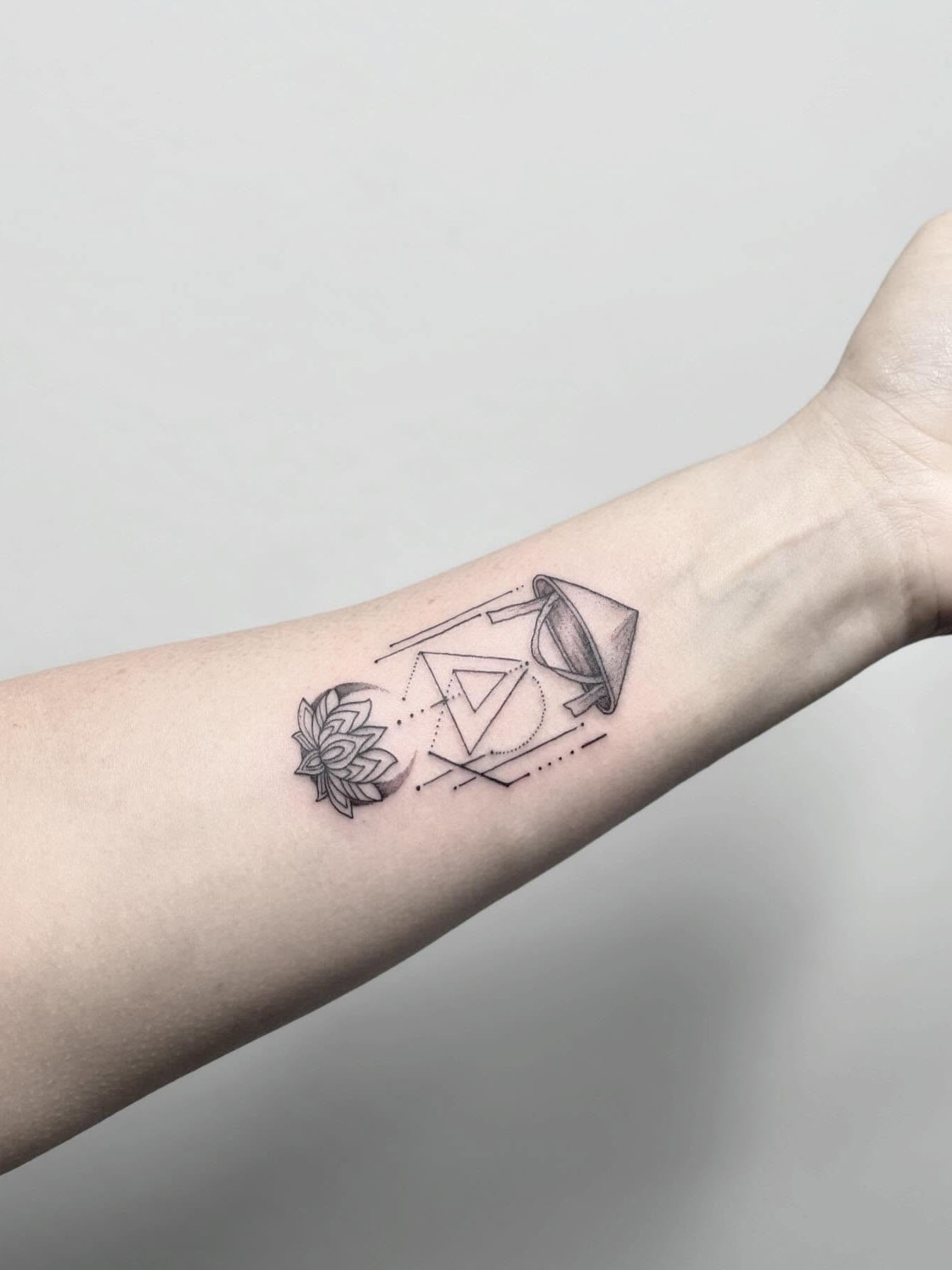
Healing Process and Aftercare for Wrist Tattoos
The wrist is a high-motion area, which means proper aftercare is crucial to minimizing pain during the healing phase and preventing complications.
Step-by-Step Wrist Tattoo Aftercare Routine
- Keep it Clean (First 24-48 Hours): Carefully remove the artist's wrap when instructed. Wash the tattoo gently with unscented, antibacterial soap and lukewarm water. Pat dry with a clean paper towel. Do not rub.
- Moisturize Sparingly: Once dry, apply a very thin layer of tattoo-specific ointment or unscented lotion (as advised by your artist). The wrist is prone to being over-moisturized, so use a pea-sized amount only 2-3 times a day.
- Minimize Movement: The constant flexing and movement of the wrist during daily activities (typing, lifting) can prolong soreness. Try to keep the wrist as still as possible for the first few days.
- Sun Protection is Essential: The sun can fade your tattoo and increase inflammation/pain during healing. Keep the area covered with loose clothing or a bandage until fully healed (2-4 weeks). Never apply sunscreen to a fresh, healing tattoo.
- Avoid Soaking: Do not submerge your wrist in water (baths, pools, or hot tubs) for at least 2-3 weeks, as this can introduce bacteria and lead to infection and increased pain.
Common Myths and Misunderstandings About Wrist Tattoo Pain
There’s a lot of conflicting advice out there about tattoos. We're here to set the record straight:
-
Myth: Applying a numbing cream will eliminate the pain entirely.
-
Reality: Numbing creams can reduce initial pain, but their effect wears off mid-session, often making the later pain feel worse. They can also change the skin's texture, making the artist’s job harder and potentially affecting the quality of the line work. We advise against them unless medically necessary.
-
Myth: Small tattoos don't hurt as much as big ones.
-
Reality: While the duration is shorter, a small tattoo with thick black lines on a sensitive spot can hurt significantly more than a large, lightly shaded piece on a less sensitive area. Location matters more than size.
-
Myth: You can build up a tolerance to tattoo pain.
-
Reality: While your mental approach improves with experience, the anatomical sensitivity remains. The pain is always there, but your mental resilience and coping mechanisms get stronger.
FAQ Section: Quick Answers to Frequent Wrist Tattoo Pain Questions
Q: Is the pain from a wrist tattoo manageable for a first-timer?
A: Yes. While it’s sensitive, the wrist is a small area, meaning the pain is typically short-lived. A skilled artist can coach you through it, making it an excellent location for a first piece if you are prepared.
Q: Do wrist tattoos hurt more than ankle tattoos?
A: It varies, but generally, yes. Both are bony areas, but the wrist typically has thinner skin and a higher concentration of superficial nerves, making the pain slightly sharper than the duller ache often felt on the ankle bone.
Q: Can I take Ibuprofen before my wrist tattoo?
A: No. We advise against taking blood thinners like Ibuprofen or Aspirin. Increased bleeding makes the artist’s work difficult and can affect the saturation of the ink. Stick to Tylenol/Acetaminophen if you need a mild pain reliever after the session.
Q: Will getting my wrist tattooed affect my hand movement afterward?
A: Temporarily, yes. Your wrist may feel stiff and swollen for 1-3 days after the session due to inflammation. This is normal. You should be able to move your hand, but major flexing or lifting should be avoided for a few days to aid healing and reduce soreness.
Summary and Final Thoughts on Wrist Tattoo Pain
The question "Does a wrist tattoo hurt?" has a definitive answer: Yes, it does, but the pain is temporary, manageable, and highly dependent on the exact location you choose.
The inner wrist is highly sensitive due to thin skin and nerves, placing it on the higher end of the pain scale, while the outer wrist is generally more tolerable.
Key Takeaways for a Smooth Experience:
- Preparation is Vital: Rest, eat, and hydrate properly before your session.
- Communicate with Your Artist: Your H2M Tattoo Studio professional is there to help manage your discomfort.
- Aftercare Reduces Pain: Diligent cleaning and moisturizing will minimize soreness and help you heal faster.
Don't let the fear of pain stop you from getting the wrist tattoo you desire. With proper knowledge and preparation, you can enjoy the process and walk away with a stunning piece of art. Ready to start your journey? Contact H2M Tattoo Studio today to book your consultation!
>>>> NOTE NOW:


